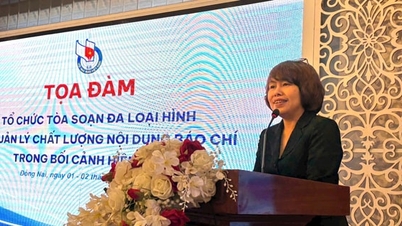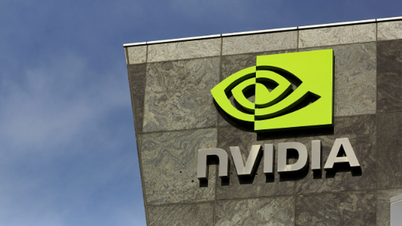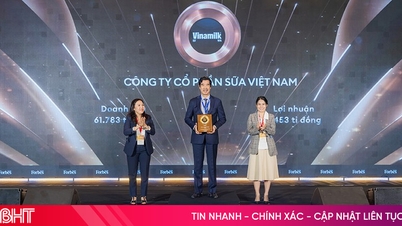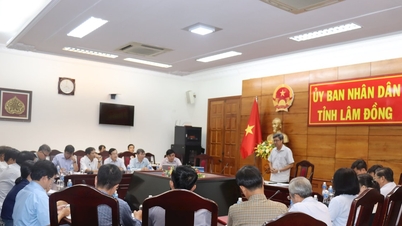Attitudes towards creative AI in journalism are overwhelmingly positive
To get a snapshot of where Gen AI (Generation Artificial Intelligence) is at in the industry, the World Association of Newspapers (WAN-IFRA) surveyed the global journalism community of journalists, editors-in-chief, and other news professionals in late April and early May about how organizations are using GenAI tools.
It’s worth noting that nearly half (49%) of survey respondents said their newsrooms are using AI tools. Overall, attitudes towards Creative AI in the industry are overwhelmingly positive: 70% of survey respondents said they expect Creative AI tools to be useful for journalists and newspapers. Only 2% said they don’t see any value in the short term, while another 10% were unsure. 18% said the technology needs to develop further to be truly useful.

Many journalists, editors and journalism experts look forward to the future of AI's ability to personalize content. (Photo: ICT)
Content summarization is the most popular tool. While there has been some somewhat panicked reaction to ChatGPT, questioning whether the technology could replace journalists, the number of newsrooms using GenAI tools for writing articles is relatively low. Instead, most AI tools are used to aggregate and summarize information. Other important AI tasks include simplified research/search, text editing, and workflow improvement.
However, in the future, the use of AI may become more widespread as more newsrooms look to use new technologies and integrate them into their operations. Respondents said they look forward to the ability of AI to personalize content in the future.
According to Chris Petitt, Chief Marketing Officer of Zephr, one of the leading digital subscription payment gateways, personalization is becoming a key factor for success for newsrooms. According to the International News Media Association (INMA), a recent study found that 77% of Gen Z (the generation attached to mobile phones) believe that it is important for B2C businesses (businesses that operate sales-oriented towards users) to customize interactions, which can be customized based on personal preferences. Therefore, the task of newsrooms is to use AI to analyze huge data about readers' behavior, preferences, and interests.

Newsrooms that start personalizing content early, even with simple tools, can gain an advantage over their competitors. (Photo: ICT)
Chris Petitt argues that progressive profiling offers a way to collect user information in a gradual way that builds trust without feeling intrusive. Users should be informed that their data is being collected and have the right to opt out.
From the collected data, AI will step in. “AI has the potential to revolutionize personalization, using algorithms to analyze large amounts of data and automatically make predictions about what kind of content a particular user is likely to be interested in,” Petitt said. However, the development of personalization is also hindered by newsrooms lacking the skills or difficulty in applying AI solutions to existing infrastructure. Adding the necessary skills or technology is expensive. But according to Petitt, newsrooms that start early, even with simple tools, can gain an advantage over competitors.
Content personalization and its importance to journalism
Commenting on this issue, journalist Nguyen Hoang Nhat - Deputy Editor-in-Chief of VietnamPlus Electronic Newspaper said that with the above figures, we can understand why personalization has received so much attention. It allows newsrooms to provide content that is deeply relevant to their readers, helping to improve reader satisfaction and loyalty.
VietnamPlus collects reader data through technology from Insider. Simply put, a reader with an interest in sports and technology will not be satisfied if they open the newspaper and see a flood of political or entertainment news, and vice versa. Therefore, personalization is the goal of many news agencies, through technology that automates news page customization, or through newsletters or news push services (web-push, mobile-push).
"But to be successful with this strategy, the newsroom needs to understand who its readers are, and this is where data comes in. The most advanced personalization strategies require data from users," said journalist Hoang Nhat.

AI has the ability to identify and categorize news topics, allowing media outlets to focus on the most engaging and relevant topics for their readers. (Photo: worldfone)
According to Dr. Pham Chien Thang - Faculty of Journalism and Communication, College of Science , Thai Nguyen University, AI is changing not only the way news is produced but also the way it is distributed and consumed. With the help of AI, news organizations and editorial offices can personalize content for each reader, providing them with stories that best suit their interests.
AI algorithms can also be used to determine the best time to publish content and the most effective distribution channels. AI has the ability to identify and categorize news topics, allowing media outlets to focus on the most engaging and relevant topics for their readers.
AI-based news distribution not only improves the speed and accuracy of information dissemination but also enhances the overall user experience by providing relevant and personalized content.
“This has had a positive impact on news readership and engagement, leading to greater reach and higher engagement for media outlets. AI has enabled news outlets to reach and engage with larger and more diverse audiences, leading to greater success for media outlets in the digital age.
In addition, AI can be used to monitor news distribution channels such as electronic portals, websites... and identify the latest stories, allowing news organizations and editorial offices to outperform their competitors," said Dr. Pham Chien Thang.
In fact, the story of AI content personalization is a topic of special interest to many newsrooms, press agency leaders and experts. This is similar to the case of Netflix or Spotify. AI helps the press move to custom content management in articles and audience segmentation. Each group of readers will receive separate content. Thanks to this strategy, readers will receive news and views that match their interests.
Phan Hoa Giang
Source


![[Photo] Binh Trieu 1 Bridge has been completed, raised by 1.1m, and will open to traffic at the end of November.](https://vphoto.vietnam.vn/thumb/1200x675/vietnam/resource/IMAGE/2025/10/2/a6549e2a3b5848a1ba76a1ded6141fae)






































































































Comment (0)